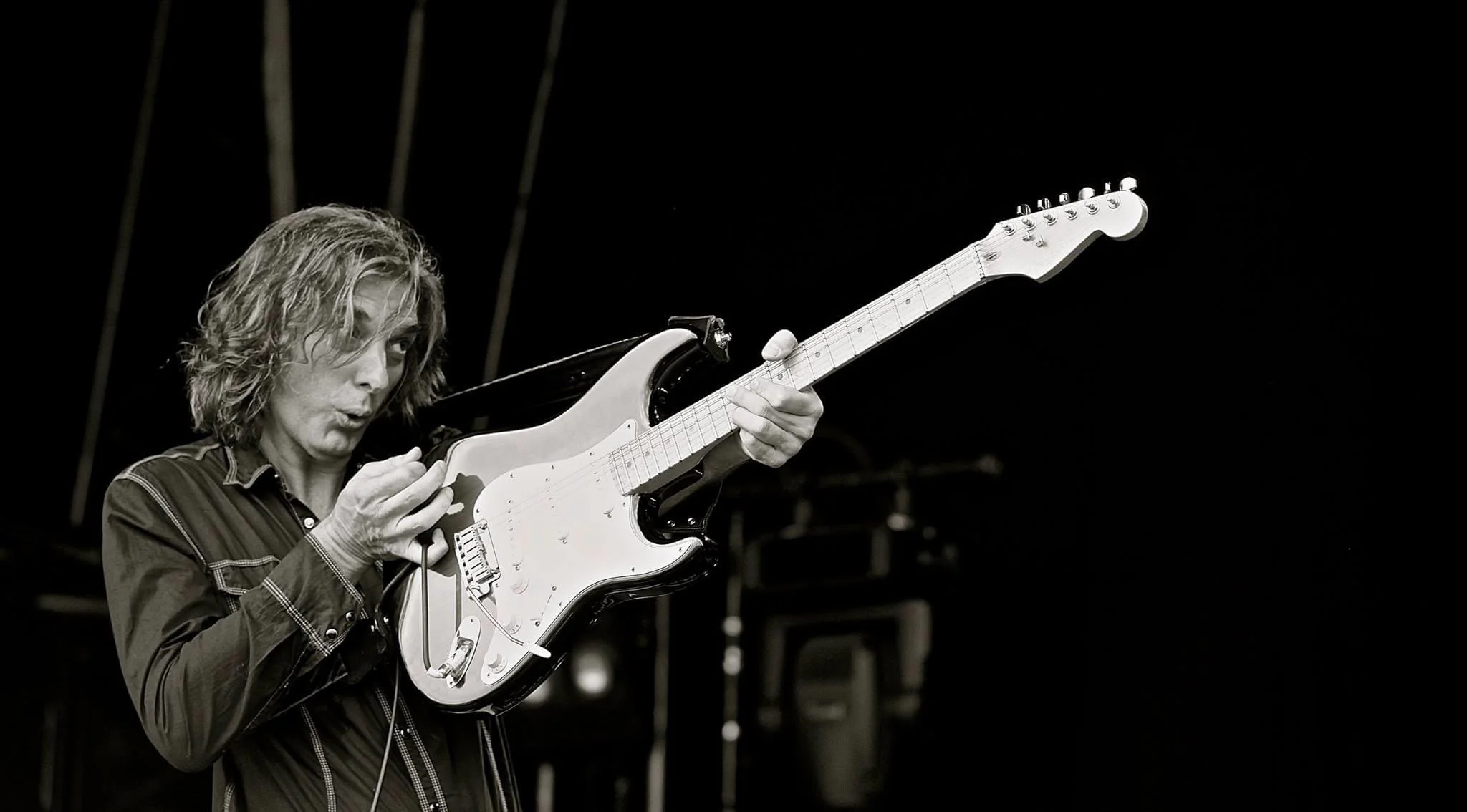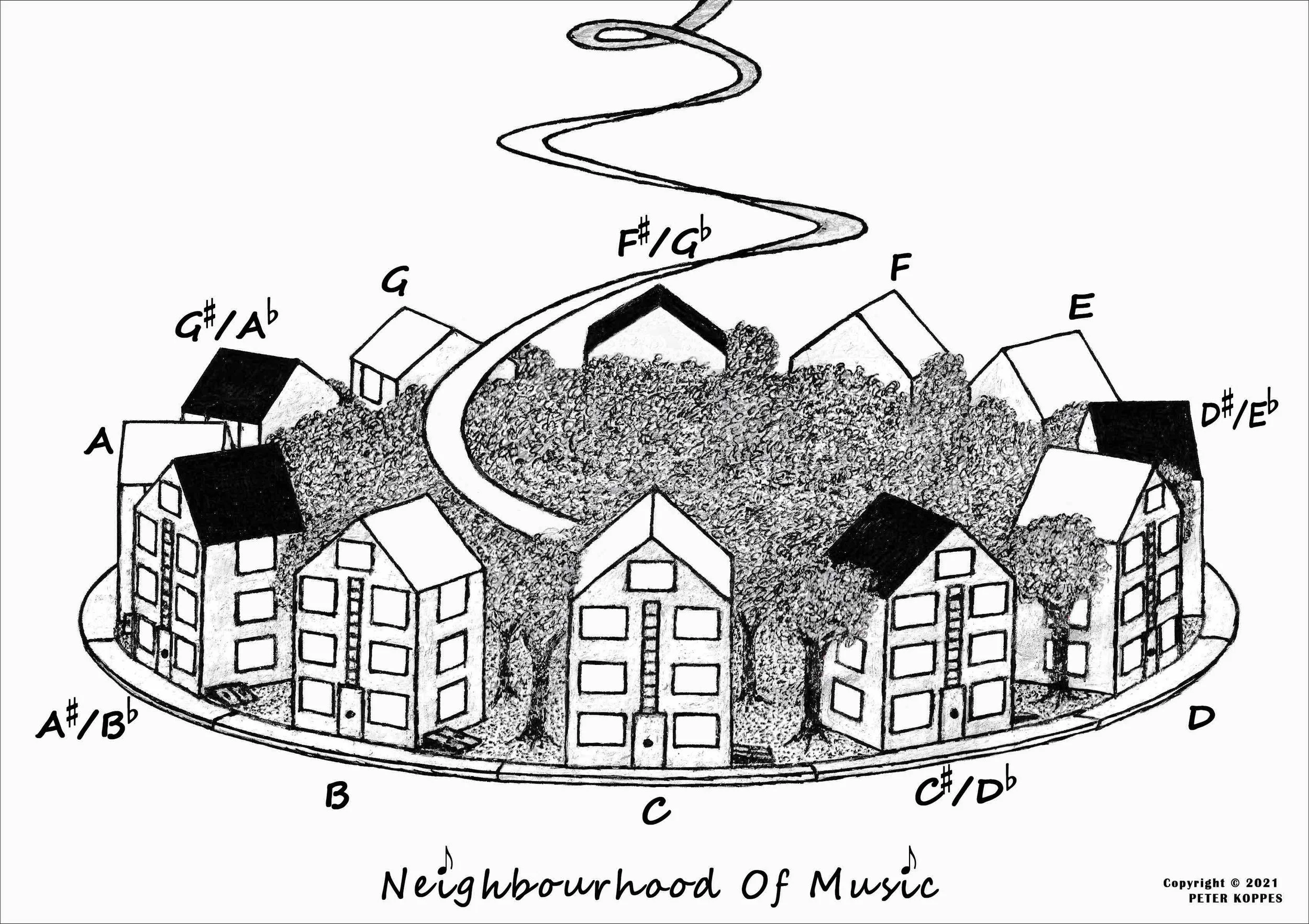About
ABOUT YOUR TUTOR
Peter Koppes -
Founding guitarist formerly with the Australian international touring and recording band The Church, renowned for their innovative guitar style as well as the alternative hit song Under The Milky Way.
He has also taught Diploma Of Music at Australian colleges and guest lectured at Queensland University of Technology.
Websites: www.peterkoppes.com thechurchband.com
Photo credit: Malcolm Viles
ABOUT THE COURSES
Until now there has been two approaches taught for guitarists to find the correct Scales to create melodic lines for a musical piece:
- identifying the Key or Root Scale
- identifying the Modes for each Chord
Both required extensive knowledge of Music Theory.
But the INTRODUCTORY LEVEL COURSE overcomes this by using:
- a simple new Box method (based on Modes)
- starting with an easy Scale Shape of only four Notes on the high E and B strings only
- then one Note can be added to each string on one of two frets inside the Box, that will identify more of the complete Scale by trial and error, and also the Mode of the musical piece
- only the commencing Chord of a piece of music to locate the Scale Position on the fretboard
The Scale or Mode will usually remain unchanged throughout a piece except for any ‘special’ Major Chords requiring a slight modification.
And the Scale Position can usually remain unchanged during a Key Change by moving one or two Notes inside the Box to a different fret to change the Mode instead.
The INTERMEDIATE LEVEL COURSE uses the strings G, B and E to identify the full octave Scales for a musical piece particularly as Modes, and any slight modification for the ‘special’ Major:
- Secondary Dominant Chords
- Borrowed Chords
- Major V and Major III Chords.
Also revolutionary Scales for Diminished and Augmented Chords are newly identified as Altered Modes with the seven Notes based on Stacked Thirds and No Consecutive Semitones.
The ADVANCED LEVEL COURSE extends all Scales and Modes across six strings plus many Blues/Jazz Scales with added Notes for BeBop.
Featured also is the Mode for the Dominant 7#9 ‘Hendrix’ Chord.
ABOUT THE MODES
Modal theory is the foundation for the courses and more easily explained using these exclusive illustrations.
THE HOUSE OF MODES ILLUSTRATION
This illustration of one House represents the seven Chords in the Key of C Major and its relative A Minor with their seven Modes. These main two are the Rooms on the ground floor.
But a piece of music can commence in any Chord Room of any House.
Modes are just Scales starting on different Notes of a Major/Minor Scale, or different Rooms in the House.
On guitar, a Mode is the easiest way to play the correct Notes rather than figuring out the Key Scale.
There are three Major Mode Chords and being cheery sounding are on the left sunny side of the House.
The three Minor Mode Chords being somber sounding are on the right cloudy side.
The seventh Half Diminished Chord is the uncommon darker sounding Minor Flat 5th Chord of the Attic.
Two of the Minor Chord Rooms have a light switch that can sometimes artificially brighten the Room for it to become a ‘special’ Major Chord called a Major V or Major III Chord represented by light rays outside window (as one Note in the Mode has changed from the one belonging in the House).
A piece of music can commence in any of the Rooms except the Attic usually.
Diminished Chords are represented by the Storm Cellar alongside the House due to some Notes that do not belong the House.
Augmented Chords are represented by the Fire Ladder on the front of the House for the same reason.
The extra Notes in Blues/Jazz Scales are represented by leaves around the Treehouse that is alongside the Mixolydian Room (with an ambiguous Major Chord called a Dominant) at the third level of the sunny side.
This House exists in a Neighbourhood of twelve Houses illustrated below, representing all the possible Keys in music and with a Spiral Slide to represent Notes moving up or down in pitch called Portamento.
NEIGHBOURHOOD OF MODES ILLUSTRATION



